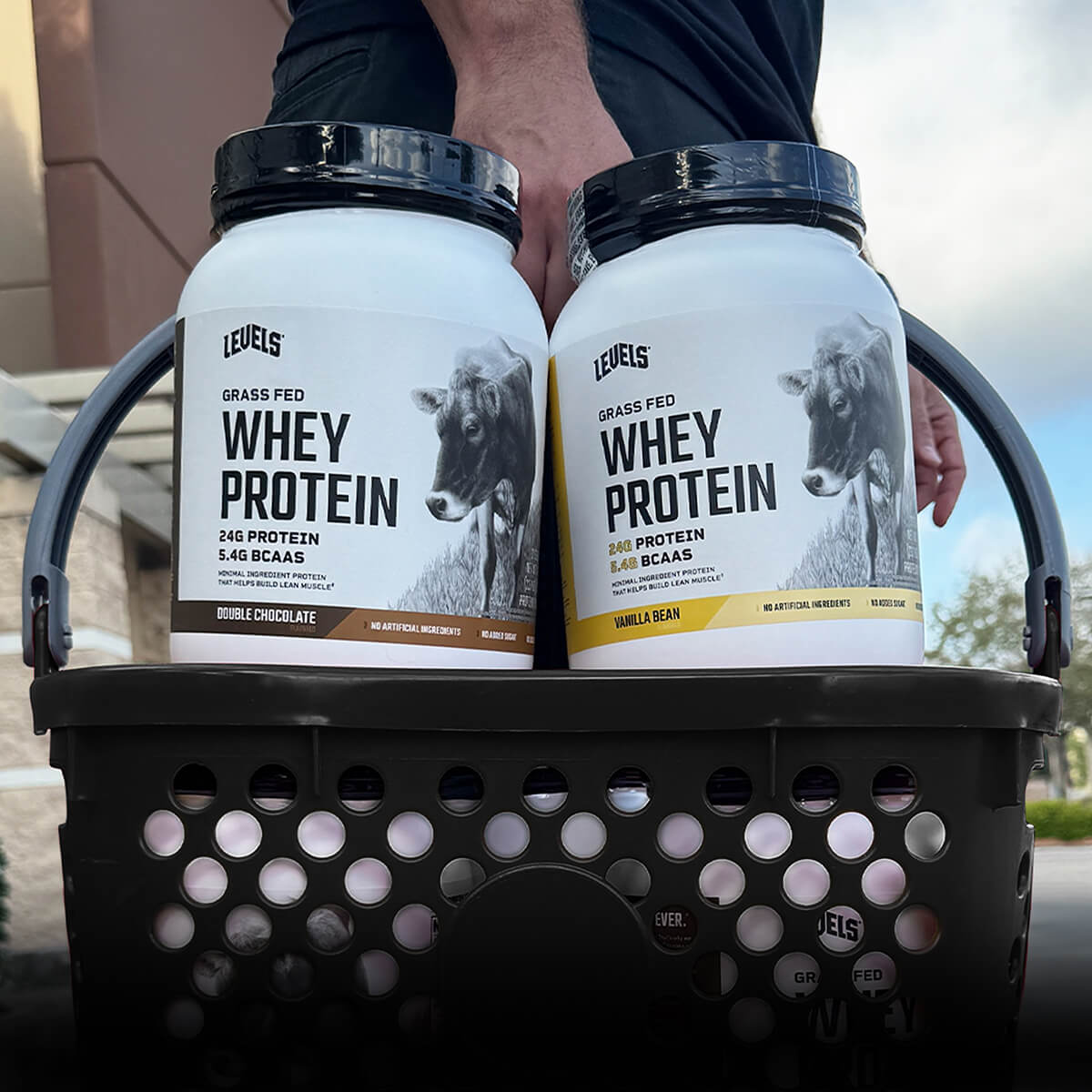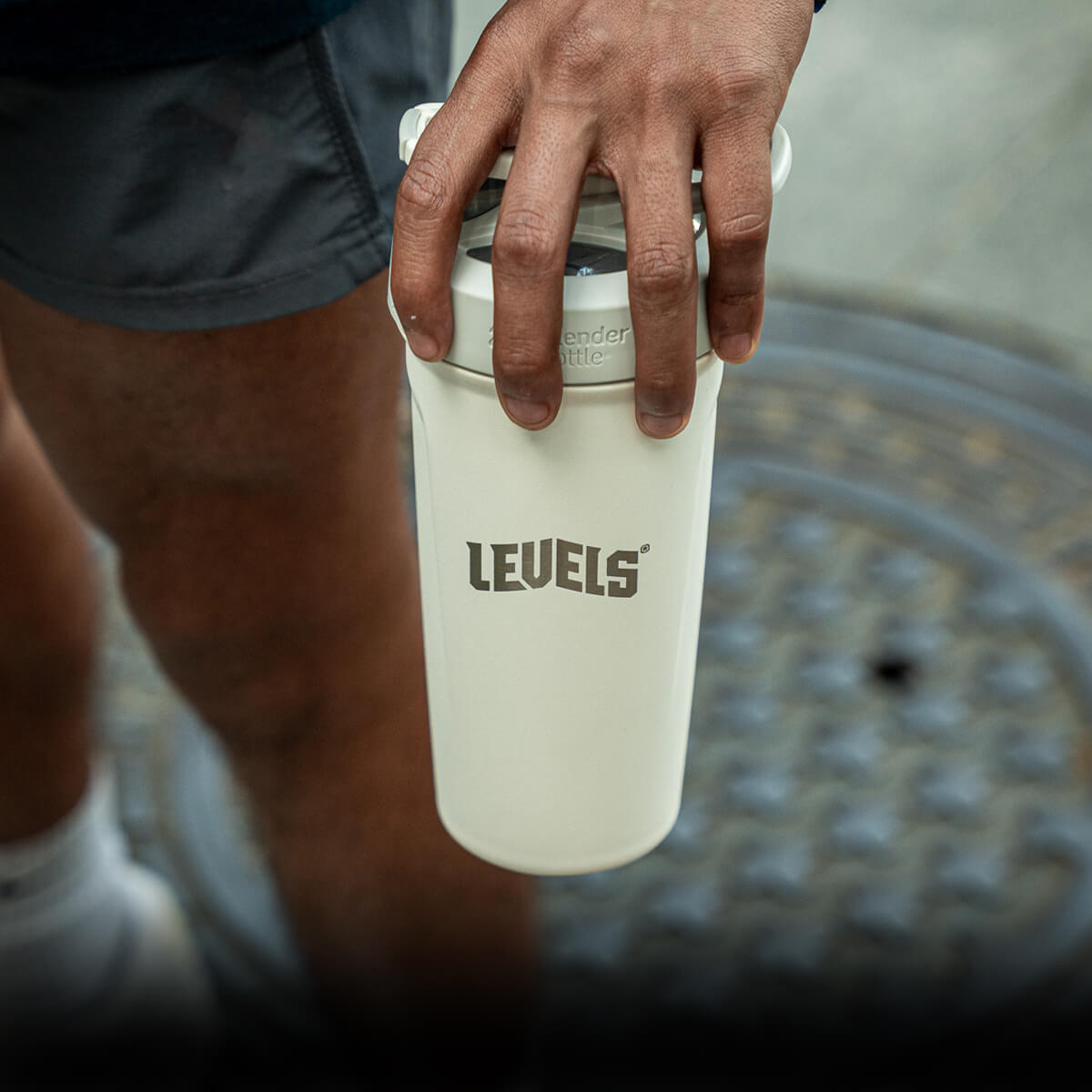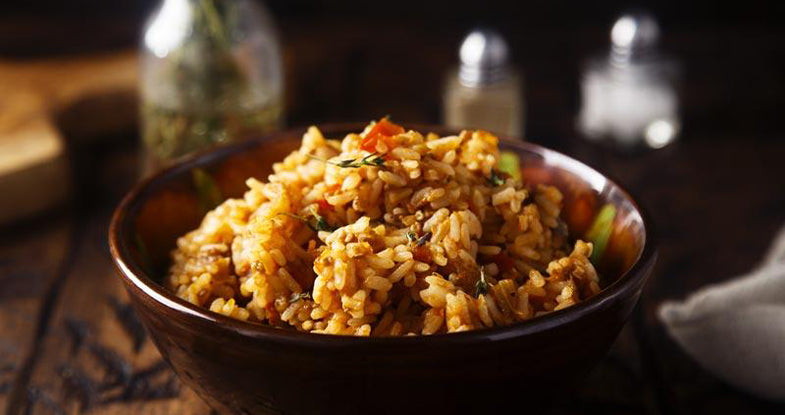Being fit, staying healthy for life, and losing weight can be challenging. After all, if these goals were easy, everyone would already be in great shape.
Sometimes, showing up for workouts, eating healthy foods, and managing your calories and macros is enough to do the trick.
But did you know you can get better results from your diet and workouts by changing how your metabolism works?
Fat adaptation refers to a shift in your metabolism that automatically leads to higher fitness levels, lowers your long-term risk of disease, and even makes fat loss faster and easier[*][*][*].
In this guide, we cover how to know whether or not you’re fat adapted, plus the most effective tips on how to become fat adapted. We even bust a few myths around fat adaptation and ketosis while we’re at it.
Keep reading to learn more about what fat adaptation is and why you should care about it.
What Is Fat Adapted?
What does it mean to be fat adapted?
In a nutshell, fat adaptation means your body is highly effective at using fat for energy, and that you can easily burn fat when needed.

Being fat adapted not only allows you to burn more fat, but also helps with intermittent fasting, increases your fitness levels, and makes the keto diet easier[*][*][*].
However, fat adapted is not a scientific term. The closest term used by scientists is metabolic flexibility[*].
Here’s the technical definition of metabolic flexibility: “a clear capacity to utilize lipid [fat] and carbohydrate fuels and to transition between them”[*].
As you can see, metabolic flexibility includes both sides of the coin: fat-burning as well as using carbs as fuel.
A healthy metabolism can handle carbs or fats. And equally importantly, your body must be able to switch between these two states as needed.
The opposite of metabolic flexibility is called metabolic inflexibility, and as we’ll cover more in a moment, it’s associated with all kinds of health problems[*].
Fat Adapted vs. Ketosis vs. Keto Adapted
Now that you know the basics of fat adaptation, it’s time to clear up some misconceptions around fat adaptation and the ketogenic diet before we move on.

The keto diet is extremely popular right now, and it’s also received plenty of scientific support recently[*].
As a result, there’s been some confusion around terms and their definitions.
While keto works great to increase fat-burning, it’s far from the only way to become fat adapted.
You can burn plenty of fat without going on the keto diet. For example, intermittent fasting and other forms of calorie or carb restriction crank up fat-burning, as does exercise[*][*][*].
And ketosis isn’t the same thing as fat adapted, either.
A state of ketosis occurs when you restrict carb intake and your liver begins producing ketone bodies[*].
Although ketosis is associated with greater fat-burning, entering ketosis is not necessary for fat-burning or fat adaptation[*]. Plenty of fat-burning can still occur without any ketone production.
And while going into ketosis may be good for your health, it doesn’t necessarily ensure that you’re going to achieve your weight loss goals, either[*].
Lastly, you may have heard the term “keto adapted.”
Keto adapted means your body is accustomed to the keto diet and that you’re past the “keto flu” stage[*][*].
If you’re keto adapted, you’re following the keto diet, you’re in a state of ketosis, and your body is at least partially fat adapted.
But if you aren’t on the keto diet, don’t sweat it. You can still become highly fat adapted. In the next section, you’ll learn more about the benefits of doing so.
5 Reasons Fat Adaptation Is Important
Why should you care about fat adaptation? Because this beneficial metabolic shift has something to offer everyone.
Whether your goals involve weight loss, anti-aging, fitness, cognition, or simply staying healthy, it pays to be fat-adapted.

1. It’s easier to lose weight (or maintain a lean physique)
Unsurprisingly, being fat adapted increases your chances of successful weight loss by boosting your ability to burn fat[*][*].
Fat adaptation also makes maintaining your results after you reach your goal weight easier[*]. People who aren’t fat adapted are much more likely to regain weight after weight loss[*].
And according to a 2020 study, poor metabolic flexibility makes you more likely to gain unwanted weight in the future — even if you’re currently lean[*].
2. Fat adaptation may slow aging
A 2019 study published in the journal Aging examined the relationship between fat adaptation and s-klotho, an enzyme “thought to be an ageing suppressor”[*].
The researchers found that the amount of fat participants burned at rest and during exercise was linked to higher s-klotho levels.
As a result, the study concluded that being fat adapted as you get older could slow down biological aging[*].
3. Higher fitness levels
If you want to be as fit as possible, you need to be fat adapted.
Heightened fat oxidation or fat burning is associated with high levels of aerobic fitness, decreased fatigue during activity, faster recovery between repeated bursts of intense exercise, and increased power output[*][*][*][*][*].
4. A healthier brain
According to a 2018 paper published in Nature Reviews Neuroscience, becoming fat adapted may make your brain more resilient[*]. In particular, it could help protect against stress, injury, and disease.
The authors also speculated that fasting, ketosis, and exercise could strengthen brain pathways related to cognition, mood, and learning[*].
5. Reduced risk of serious chronic diseases
Earlier, we discussed metabolic inflexibility, which is essentially the opposite of fat adaptation.
Metabolically inflexible people rely on eating carbs for energy all the time because their bodies are ineffective at burning fat for fuel[*].
Unfortunately, if you’re not fat adapted and instead have to eat lots of carbs, there’s also a high chance that your cells have poor sensitivity to insulin (the sugar storage hormone)[*].

Metabolic inflexibility and insulin resistance increase your risk of type 2 diabetes, cardiovascular disease, cancer, and other severe medical conditions[*][*][*].
However, by achieving fat adaptation, you may be able to lower your risk of such diseases[*][*][*].
5 Signs You’re Fat Adapted
The answer to “Am I fat adapted?” isn’t simply yes or no.
Some people are highly fat adapted, while others have zero ability to use fat for fuel — but most people fall somewhere in the middle.
Use this checklist to determine the degree to which you’re fat adapted:
- Fasting is comfortable: The ability to easily skip one or more meals suggests you are highly fat adapted. People who aren’t fat adapted have trouble burning fat when they miss a meal, which leads to fatigue, irritability, and hunger[*].
- Weight loss and fat loss are easy: If you’re fat adapted, weight loss probably isn’t a big challenge. You may already be lean. In contrast, people who aren’t fat adapted usually hit a fat loss plateau before reaching their goals, even on the keto diet.
- Restricting carbs or going keto is no problem: If you’re fat adapted, eating low-carb or keto won’t be difficult, because you can shift into fat-burning mode quickly. But “sugar crashes” and keto flu-like symptoms could be signs that your body has trouble switching to fat-burning mode.
- Low blood glucose and high insulin sensitivity: Healthy fat adaptation is associated with low fasting blood glucose and insulin, lower blood sugar after a meal or glucose tolerance test, and other markers of insulin sensitivity like low glycated hemoglobin (HbA1c)[*][*]. You can ask your doctor for these tests to help determine whether you’re fat adapted.
- High aerobic fitness levels: People with high aerobic fitness levels can burn more fat while exercising[*]. If you’re fat adapted and haven’t done much aerobic exercise, you may not be aerobically fit, but would likely have an easy time building aerobic fitness in the future. You’ll also have a higher fat-burning threshold during intense exercise, which reduces the likelihood of “running out of gas” or needing carbs during workouts[*].
Next, learn how to achieve maximum fat adaptation.
How to Become Fat Adapted
First of all, keep in mind that there are degrees of fat adaptation.
Becoming fat adapted to stay healthy and lean is a great idea, but not everyone needs to go to extremes.
Many factors can enhance fat adaptation, and every individual is different.
For example, if your main focus is staying lean, you’ll want to increase fat-burning at rest, while an athlete would likely prioritize maximizing fat oxidation during exercise.

The only way to know what works for you is to experiment while looking for signs of fat adaptation as you go along.
Try mixing and matching these research-backed techniques to discover the best strategy for you:
- Avoid a sedentary lifestyle: Physical inactivity leads to metabolic inflexibility, which can wreck your health[*]. Instead of sitting around, find a way to enjoy moving. Make a habit of light physical exercise. Regular brisk walks can help you become fat adapted[*].
- Take MCT oil supplements: Medium-chain triglycerides increase fat-burning more than other fats, jump-starting the fat adaptation process and nearly doubling the amount of fat loss in one study[*][*].
- Get quality sleep: A 2020 study found that poor-quality sleep seems to reduce fat oxidation[*]. To become fat adapted, focus on obtaining high-quality rest.
- Eat plenty of protein: Sufficient protein intake increases fat-burning in response to exercise, and whey protein may be more effective for becoming fat adapted compared to other types of protein[*][*].
- Fast regularly or eat on a time-restricted schedule: Techniques like intermittent fasting or time-restricted eating are proven ways to become more fat adapted[*][*][*].
- Do resistance training: Lifting weights or other forms of strength training can immediately boost fat-burning as well as lead to becoming fat adapted over time[*][*]. A 2009 study found as little as 11 minutes, 3 times per week led to significant improvements[*].
- Include regular low-intensity aerobic exercise: Increasing your aerobic fitness helps you become fat adapted[*]. Evidence suggests endurance training can increase resting fat-burning by 23%[*]. The key, however, is to stay at low to moderate intensities[*]. One study found dramatic fat adaptation occurred after 2 hours of low-intensity cardio per week for 3 months[*].
- Restrict carbs (sometimes): You don’t need to cut out carbs all the time, but tactically reducing your carb intake — especially before low-intensity aerobic exercise and after resistance training — is a surefire way to become more fat adapted[*][*].
- Don’t overeat all the time: It may sound obvious, but constant overeating decreases fat adaptation[*]. Even if your goal is to gain muscle weight, scheduling in some calorie restriction periods is wise.
- Try fasted cardio: Doing your cardio in the morning before breakfast boosts fat-burning for 24 hours, and it’s one of the easiest ways to increase fat adaptation[*].
- Go keto (if you want): The keto diet doesn’t have a monopoly on fat adaptation, but it’s still a potent tool[*]. A few months of standard keto can increase your metabolic flexibility, and you don’t need to stay in ketosis permanently to benefit[*]. For competitive athletes or individuals who want to build muscle, we recommend fueling up with carbs for performance using a cyclical keto or targeted keto strategy[*].
Final Thoughts
There’s no one-size-fits-all solution to become fat adapted.
It’s the result of many different factors, and the best approach to increase fat adaptation depends on your goals and unique personal history.
If you want to achieve the benefits of metabolic flexibility, your best bet is a slow and steady approach. Make sustainable changes in your life and look for telltale signs of fat adaptation.













